This post may contain affiliate links. Please read our disclosure policy.
Want to give your food a flavor boost? This easy recipe for Creole seasoning is perfect for you! It’s a small batch so you can make just what you need, and it’s made with a blend of common spices that you probably already have in your cupboard. This seasoning is versatile enough to use on any dish, from a quick weeknight meal to something more special. It will add a delicious kick of spice and warmth to whatever you’re cooking.

Our Creole Seasoning not only brings a flavorful kick to a variety of single serving and small batch dishes, but it’s also perfect for adding a spice-filled touch to chicken, meats, and vegetables. In addition, it wonderfully complements Gumbo, zesty Shrimp Tacos, hearty Red Beans and Rice, and savory Crawfish Beignets.
Table of Contents
- Why You’ll Love This Recipe
- What Is Creole Seasoning?
- Shelf Life Of Homemade Creole Seasoning
- What’s In Creole Seasoning?
- How To Make Creole Seasoning
- Expert Tips
- Serving Suggestions
- How To Store Homemade Creole Seasoning
- Frequently Asked Questions
- Ways To Use Leftover Ingredients
- Small Batch Creole Seasoning Recipe
Why You’ll Love This Recipe
- Simple to Make: With just a few common spices, you can easily prepare this seasoning.
- Adjustable Heat: Control the spiciness to suit your palate by adjusting the spices as you like.
- Cost-Effective: Homemade blends are more affordable than store-bought versions.
- Long Shelf Life: Stored properly, it stays fresh and flavorful for months.
- Versatile Use: Great for meats, veggies, and sauces, it’s a kitchen all-rounder.
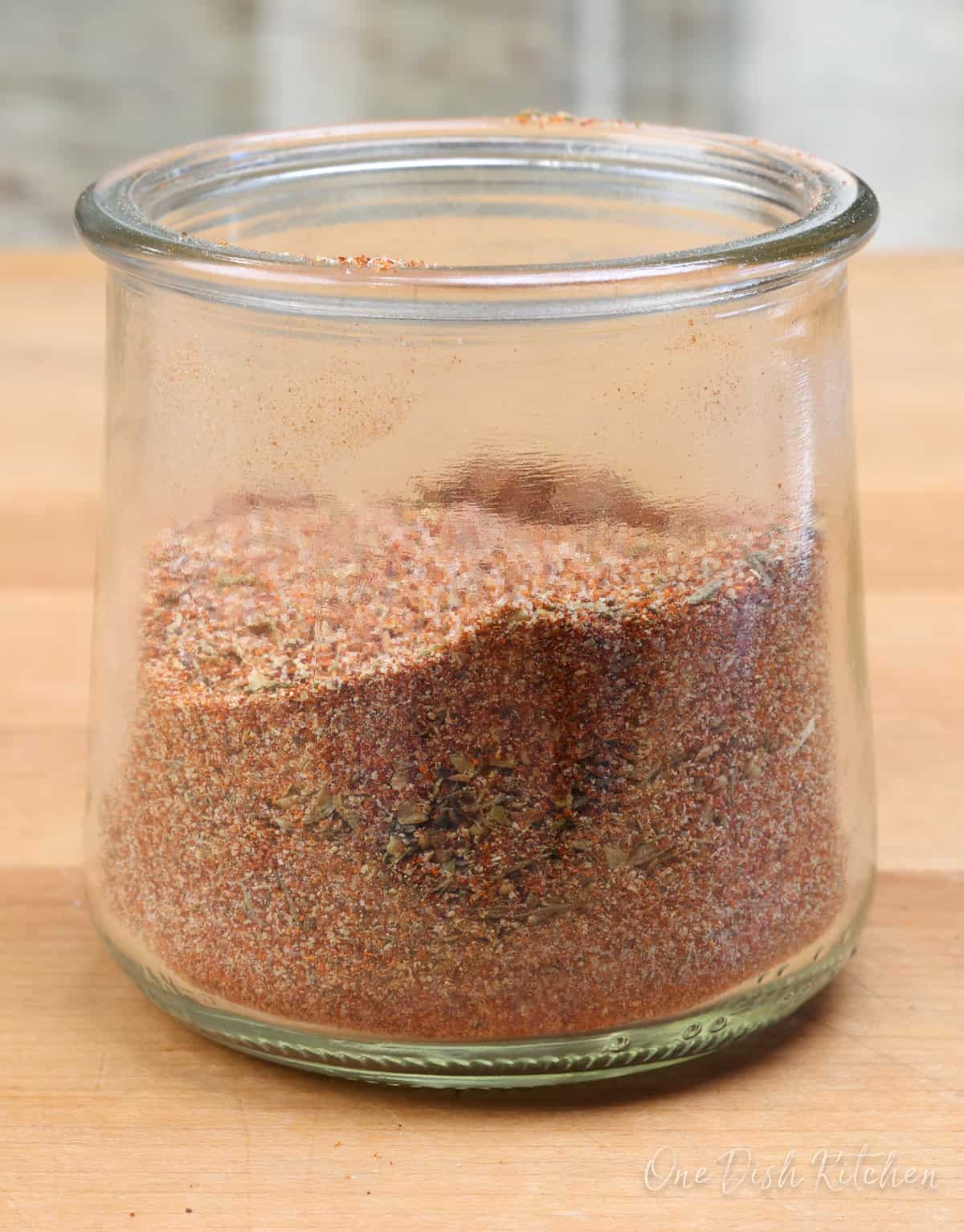
What Is Creole Seasoning?
Creole seasoning is a dynamic and flavorful spice blend with deep roots in Louisiana’s rich culinary tradition. While there are popular brands like Tony Chachere’s offering their own versions, our small batch recipe provides a homemade alternative that encapsulates the essence of this classic seasoning. It’s ideally suited for smaller kitchens and perfectly portioned for individual or small-scale cooking.
Shelf Life Of Homemade Creole Seasoning
When considering how long your homemade Creole seasoning will last, it’s essential to focus on the specific ground spices used in our recipe. This blend, featuring spices like cayenne pepper, garlic powder, and paprika, typically has a shelf life ranging from six months to one year. The longevity is influenced by the nature of these ground spices, which are known for retaining their flavor over a considerable period when stored properly.
From my personal experience, I’ve kept my homemade Creole seasoning in the pantry for around six months, and it has maintained its flavor quite well. In reality, though, I find myself using it up much sooner, thanks to its versatile and delicious flavor. Since this recipe yields just a little less than 1/2 cup, you’ll likely find it’s gone before the six-month mark as well
Spices don’t spoil like perishable foods, but they do lose freshness and flavor over time. A simple way to check their potency is by smelling them. If they emit a strong, fragrant aroma, they’re still good to use; if they’re faint or have no scent, it’s probably time to replenish them.
While the expiration dates on spice jars offer a general guideline, spices can remain effective for a longer period. However, storing them in airtight containers in a cool, dark place is key to maintaining their potency. Remember, while aged spices aren’t harmful, they do lose the intense flavors that make your dishes stand out. Therefore, regularly refreshing your Creole seasoning blend ensures that your cooking always has that special, flavorful touch.
What’s In Creole Seasoning?
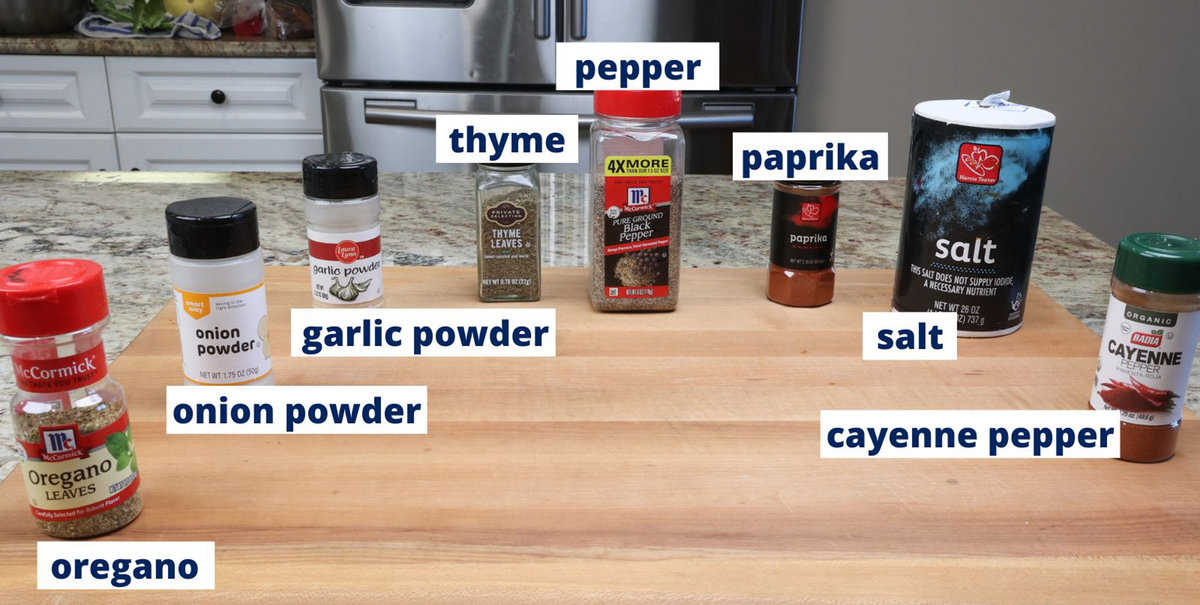
- Paprika: Adds warmth and color. For a smoky flavor, try smoked paprika and adjust the amount based on your desired smokiness. We also use paprika in many of our recipes including Chicken Tikka Masala, Slow Cooker Ropa Vieja, and Sheet Pan Chicken Fajitas.
- Salt: Balances and enhances flavors. Sea salt can be a great alternative. Feel free to adjust the salt to your taste. Remember, you can always add more, but you can’t take it away!
- Garlic Powder: Brings a pungent, earthy taste. We use this pantry staple in many of our single serving recipes including Crack Chicken, Baked Ribs, and Vegetable Lasagna.
- Black Pepper: Adds a sharp, spicy note. White pepper is a milder substitute.
- Onion Powder: Provides a sweet, yet savory depth. Another pantry staple, we use onion powder in our Slow Cooker Pot Roast recipe and in our small batch BBQ sauce recipe. You’ll even find onion powder in our small batch taco seasoning.
- Cayenne Pepper: Delivers the heat. Adjust to taste. Also consider using cayenne pepper to make Jerk Chicken, Shrimp Creole, and Guacamole Salad.
- Dried Oregano & Thyme: These herbs round out the flavor profile. Oregano is also found in our Lasagna Soup recipe and in our Sheet Pan Greek Chicken. Use thyme in Smothered Pork Chops and Tortellini Soup.
Remember, if you have any ingredients leftover from this small batch Creole seasoning recipe, check out our Leftover Ingredients Recipe Finder.
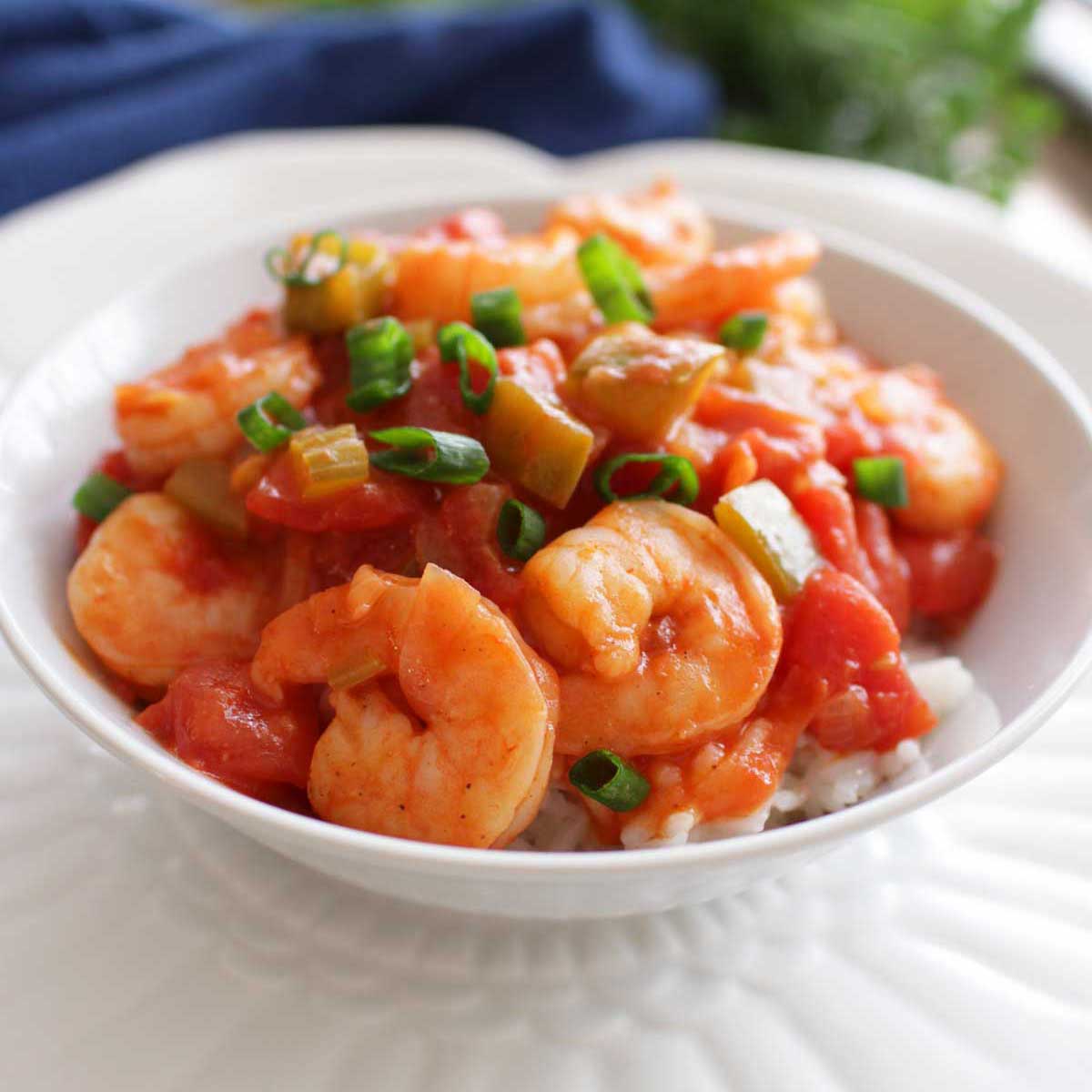
How To Make Creole Seasoning
- Combine all the spices in a jar or container. This recipe will yield just a little less than 1/2 cup of seasoning.
- Stir the spices thoroughly using a fork. As an alternative, you can close the jar with its lid and shake it well to ensure the spices are evenly mixed.
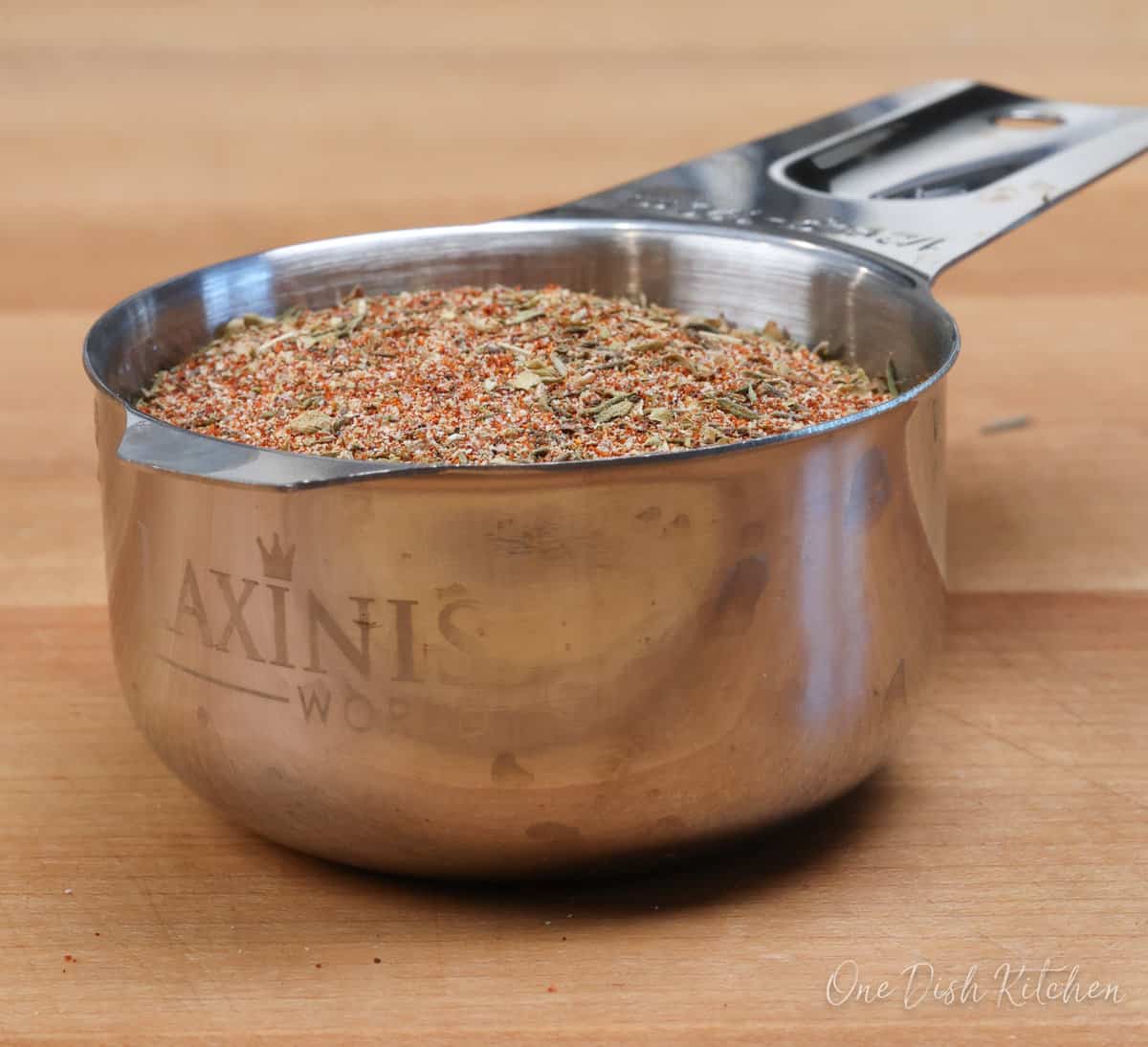
Expert Tips
- Proper Storage: Keep in an airtight container in a cool, dark place to maintain freshness.
- Blend Well: Ensure all ingredients are thoroughly mixed for a uniform flavor.
- Taste and Adjust: Don’t hesitate to tweak the blend to your liking, especially the heat level.
- Freshness Counts: Use fresh spices for the best flavor impact.

Serving Suggestions
Creole seasoning is so versatile and compliments a range of dishes. Here are some ways to enjoy it.
- Roasted Vegetables: Sprinkle over assorted vegetables like cabbage before roasting for a spicy, aromatic twist.
- Grilled Meats: Rub the seasoning onto chicken, beef, or pork before baking or grilling to infuse a bold, Creole flavor.
- Seafood Delights: Enhance shrimp or fish with a dash of this seasoning before cooking for a Cajun-inspired taste.
- Biscuits and Gravy: Add a pinch to your sausage gravy for a unique, Southern-style breakfast experience.
- Rice Dishes: Mix into jambalaya or rice pilaf to transport your taste buds to the heart of Louisiana.
- Soups and Stews: Elevate the flavor profile of your favorite soups and stews with a sprinkle of this seasoning.
- Beyond the Bayou: Don’t be afraid to experiment! Sprinkle it on popcorn, scrambled eggs, or even homemade pizza dough for a flavor adventure.

How To Store Homemade Creole Seasoning
Storing homemade Creole seasoning properly is key to maintaining its freshness and flavor. Here are some tips for optimal storage:
- Use an Airtight Container: Store your Creole seasoning in an airtight container. This could be a glass jar with a tight-sealing lid or a plastic container with a secure closure.
- Keep It Cool and Dry: Store the container in a cool, dry place. A pantry or a cabinet away from heat sources like the stove or direct sunlight is ideal. Heat, moisture, and light can cause the spices to lose their potency more quickly.
- Label and Date: It’s helpful to label the container with the name of the seasoning and the date you made it. This helps you keep track of its freshness.
- Avoid Moisture: Ensure your hands and utensils are dry when using the seasoning to prevent moisture from getting into the container, which can lead to clumping or spoilage.
- Regular Checks: Periodically check the seasoning for any signs of spoilage or loss of aroma. If it starts to lose its vibrant smell or if there’s any sign of moisture or mold, it’s time to replace it.
By following these storage tips, your homemade Creole seasoning should stay fresh and flavorful for several months.
Frequently Asked Questions
Yes, simply multiply the ingredients proportionally.
Yes! All the ingredients in this recipe are naturally gluten-free.
It has a moderate kick, but you can adjust the cayenne pepper to your preference.
Absolutely! It’s versatile and enhances various recipes.
Ways To Use Leftover Ingredients
If you have any ingredients leftover from this recipe, check out our Leftover Ingredients Recipe Finder or you might like to consider using them in any of these single serving and small batch recipes:
For more information on the cooking and baking dishes I use in our “recipes for one”, please visit our FAQ page.
For examples of the dishes used at One Dish Kitchen, please visit our Store page.
If you’ve made this small batch Creole seasoning recipe, I’d love to hear how it turned out for you. Please rate the recipe and share your thoughts in the comments below.
Snapped a photo? Tag us on Instagram; we’d be thrilled to see your creation!
Small Batch Creole Seasoning
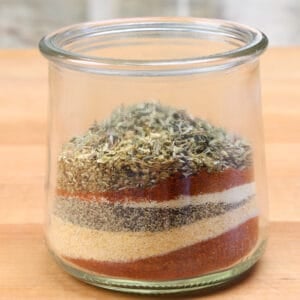
Equipment
- jar or airtight container
Ingredients
- 1 ½ tablespoons paprika
- 1 tablespoon salt
- 1 tablespoon garlic powder
- ½ tablespoon black pepper
- ½ tablespoon onion powder
- ½ tablespoon cayenne pepper
- ½ tablespoon dried oregano
- ½ tablespoon dried thyme
Instructions
- Combine all the spices in a jar or container.
- Stir the spices thoroughly using a fork. As an alternative, you can close the jar with its lid and shake it well to ensure the spices are evenly mixed.
Notes
- Proper Storage: Keep in an airtight container in a cool, dark place to maintain freshness.
- Blend Well: Ensure all ingredients are thoroughly mixed for a uniform flavor.
- Taste and Adjust: Don’t hesitate to tweak the blend to your liking, especially the heat level.
- Freshness Counts: Use fresh spices for the best flavor impact.
- Use an Airtight Container: Store your Creole seasoning in an airtight container. This could be a glass jar with a tight-sealing lid or a plastic container with a secure closure.
- Keep It Cool and Dry: Store the container in a cool, dry place. A pantry or a cabinet away from heat sources like the stove or direct sunlight is ideal. Heat, moisture, and light can cause the spices to lose their potency more quickly.
- Label and Date: It’s helpful to label the container with the name of the seasoning and the date you made it. This helps you keep track of its freshness.
- Avoid Moisture: Ensure your hands and utensils are dry when using the seasoning to prevent moisture from getting into the container, which can lead to clumping or spoilage.
- Regular Checks: Periodically check the seasoning for any signs of spoilage or loss of aroma. If it starts to lose its vibrant smell or if there’s any sign of moisture or mold, it’s time to replace it.
Nutrition
The information shown is an estimate provided by an online nutrition calculator. It should not be considered a substitute for a professional nutritionist’s advice.
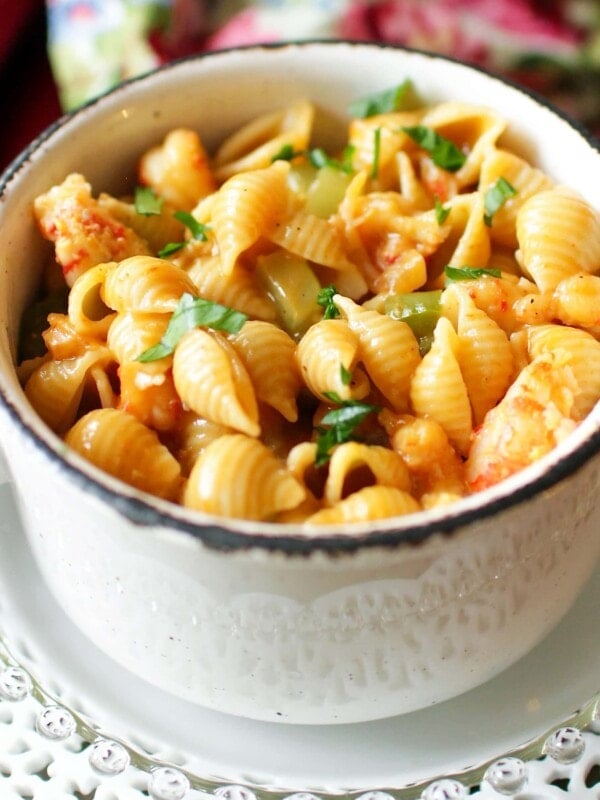
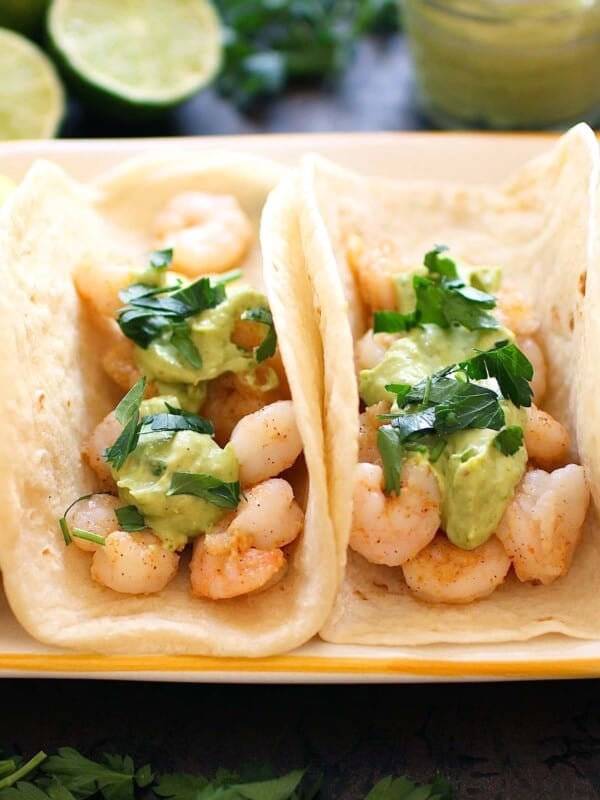
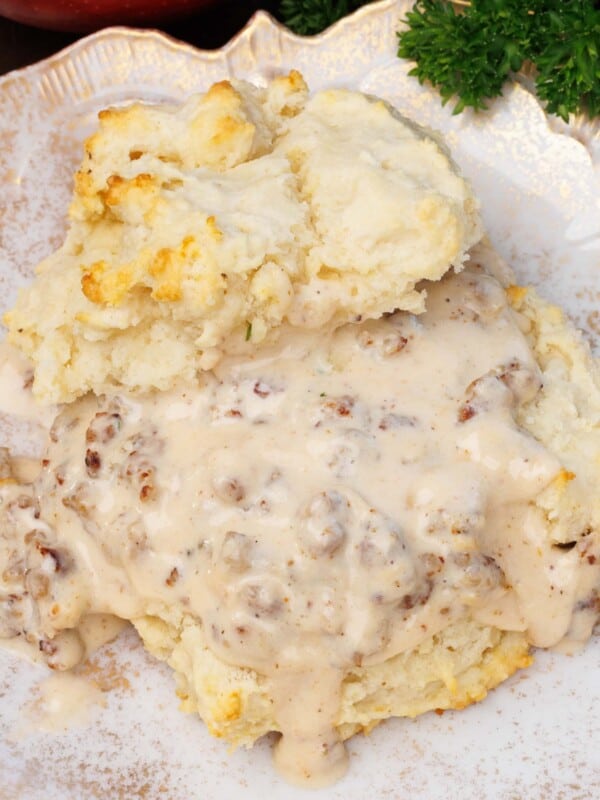

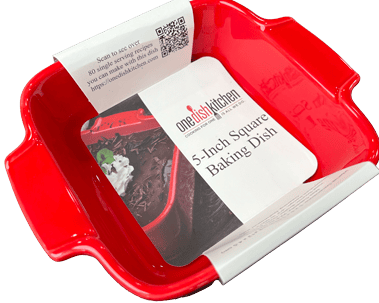









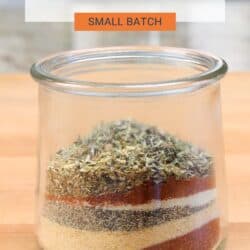
The flavor was spot on and l made the shrimp for one delicious five star
Great blend of spices. I just made this batch to have with your shrimp creole recipe. Turned out wonderful. I now have a bottle of this set aside and labeled to use for any Cajun dishes that I want to make
Great recipe.